Protecting Belize’s Mangroves
Mangroves serve as a natural buffer to coastal communities in times of natural disaster, as well as provide a habitat for marine life near the coast. But there is a thin line between development and balance and with the ever-growing demand for more high-rise resorts and luxury stays in tourist destinations, there is a constant struggle for balance and managing the natural buffer that mangroves provide. In this week’s edition of Belize on Reel, News Five’s Marion Ali looks at the delicate harmony between both. Here’s that report
Marion Ali, Reporting
Mangroves provide a natural shield when hurricanes bear down on coastal communities. They protect against the force of tidal waves and wind. But a lot of Belize’s mangroves are being destroyed, wantonly in many cases, for the sake of development. There is a conscious effort on the part of the government to reverse that trend by implementing new measures.
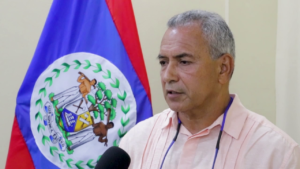
Orlando Habet
Orlando Habet, Minister of Environment
“In our Bond Challenge Project, the restoration of a hundred and thirty thousand hectares of degraded lands and that also includes some mangrove restoration. I think it’s around six thousand acres of mangroves that will be restored and implanted between now and 2030. So we have a restoration desk at the Department of Environment and they are now fully involved, fully engaged, trying to start the project, but it is going to be a collaboration with the private sector, with the N.G.O.s who are working on there, for example, certain regulations that regulate the use and you say tearing down of the mangroves, especially in areas where you have these developments for tourism, especially of housing in the cayes and coastal areas.”
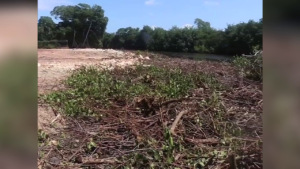 Property owners should acquire permits from the Forest Department before they clear away mangroves for development, but many times the law is not upheld. So, when the Department of the Environment gets the information, they assess the damage and impose a fine. As Belize’s tourism industry growsthere is a demand for more construction of resorts and hotels in coastal communities. It potentially means that mangroves will be cleared to accommodate these buildings. Of particular concern for the World Wildlife Fund is that most of the lands that contain mangroves are privately owned. Nadia Bood is the Senior Program Officer for Marine Science and Climate Change.
Property owners should acquire permits from the Forest Department before they clear away mangroves for development, but many times the law is not upheld. So, when the Department of the Environment gets the information, they assess the damage and impose a fine. As Belize’s tourism industry growsthere is a demand for more construction of resorts and hotels in coastal communities. It potentially means that mangroves will be cleared to accommodate these buildings. Of particular concern for the World Wildlife Fund is that most of the lands that contain mangroves are privately owned. Nadia Bood is the Senior Program Officer for Marine Science and Climate Change.
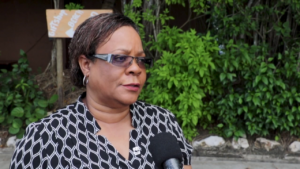
Nadia Bood
Nadia Bood, Senior Program Officer, Marine Science & Climate Change, WWF, Belize
“A key project that we are undertaking right now is looking at mangrove land tenure ship to understand, you know, who owns the private – to what extent, what percentage of mangroves in the country is in private hands. and it’s really important understand what percentage is still state-owned, where we can have some interventions. Our original estimation before we commenced this research is that you know somewhere in the vicinity of seventy percent of Belize’s coastal zone is in private hands, so that begs the need, you know, for us to work with these landowners because that will only put additional pressure on the existing mangroves that we have.”
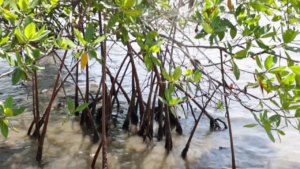 The WWF is working with the government through the Lands and Surveys Department, the Belize Coastal Zone Management Authority Institute and the Forest Department to undertake a national land tenure analysis. It is with a view to develop an engagement strategy to work with landowners on how to sustainably develop around the mangroves that are on their property. What will serve to complement that effort is a partnership that Fragments of Hope is forging with Strong Coast, a U.S-based non-government organization, to provide training on how to trim mangroves.
The WWF is working with the government through the Lands and Surveys Department, the Belize Coastal Zone Management Authority Institute and the Forest Department to undertake a national land tenure analysis. It is with a view to develop an engagement strategy to work with landowners on how to sustainably develop around the mangroves that are on their property. What will serve to complement that effort is a partnership that Fragments of Hope is forging with Strong Coast, a U.S-based non-government organization, to provide training on how to trim mangroves.
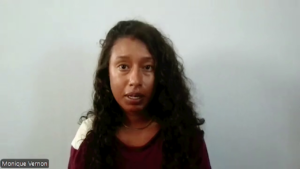
Monique Vernon
Monique Vernon, Coral Practitioner, Fragments of Hope
“I don’t know of any actual method, like they don’t come and say, well, this is how to properly trim a mangrove. I don’t know of any documents or anything to that effect, so with this training that -with this collaboration that Fragments of Hope has with Strong Coast, more than likely, I would be trained into how to properly trim mangroves among other people and then that way we could come and train other people in Belize how to do that because from what I understand, mangroves can’t be cut any kind of way. It’s not like the normal trees you see out here. If you cut it in a bad way, the whole thing can die.”
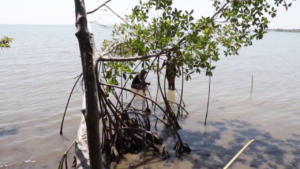 In May 2023, Bowen and Bowen spearheaded a mangrove reforestation exercise on Goff’s Caye to curb erosion that has been occurring on the island for over a decade. Kent Garbutt, an assistant lab technician at the CZMAI explained to us that there was a special method being applied to the reforestation effort.
In May 2023, Bowen and Bowen spearheaded a mangrove reforestation exercise on Goff’s Caye to curb erosion that has been occurring on the island for over a decade. Kent Garbutt, an assistant lab technician at the CZMAI explained to us that there was a special method being applied to the reforestation effort.

Kent Garbutt
Kent Garbutt, Asst. Lab Technician, CZMAI
“We’re using the method called the Riley Encasement Method, I mus say of some sort because I have altered it to suit this area. So, the Riley Encasement Method is basically having something to enclose the mangroves in – a pipe, a bamboo, something of that nature. So basically it’s just cutting the pipe or the bamboo in the middle, facing it to the land because we want the water to go in but we don’t want a lot of water to go in.”
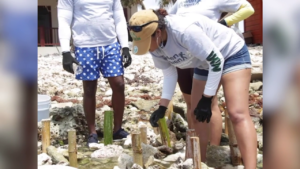 With the level of development happening along Belize’s coastal areas, it will require stringent enforcement and constant monitoring of the laws to stop the widespread destruction of the mangroves. The Ministry of Environment has established an office in San Pedro to monitor unapproved mangrove clearing. But there is a need for countrywide cover.
With the level of development happening along Belize’s coastal areas, it will require stringent enforcement and constant monitoring of the laws to stop the widespread destruction of the mangroves. The Ministry of Environment has established an office in San Pedro to monitor unapproved mangrove clearing. But there is a need for countrywide cover.
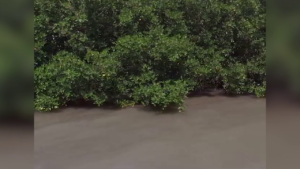 Orlando Habet
Orlando Habet
“That is part of our problem – personnel. We have to have more personnel to be able to monitor and have compliance ongoing. We will have to submit the request to Cabinet for support for funding for additional personnel that we can place at least one other person down south and possibly one in the north. We have the areas of Placencia, Hopkins, and other small islands where we have a lot of development, so we need that kind of monitoring and compliance.”
Marion Ali for News Five.







Facebook Comments